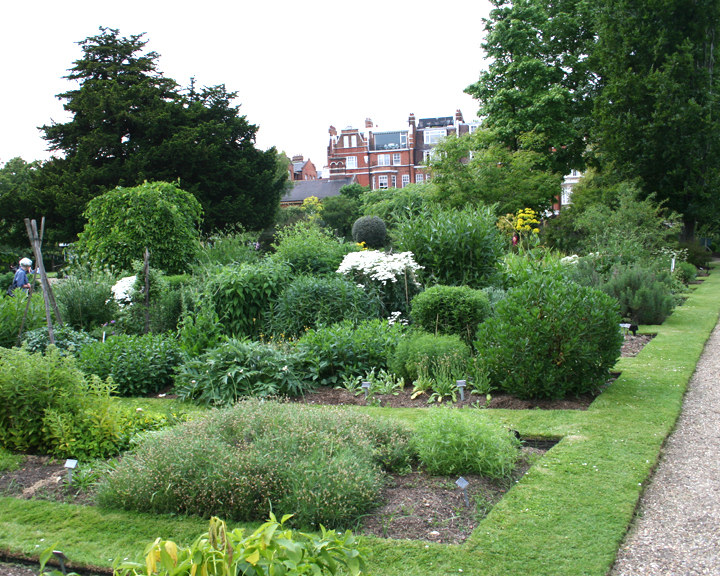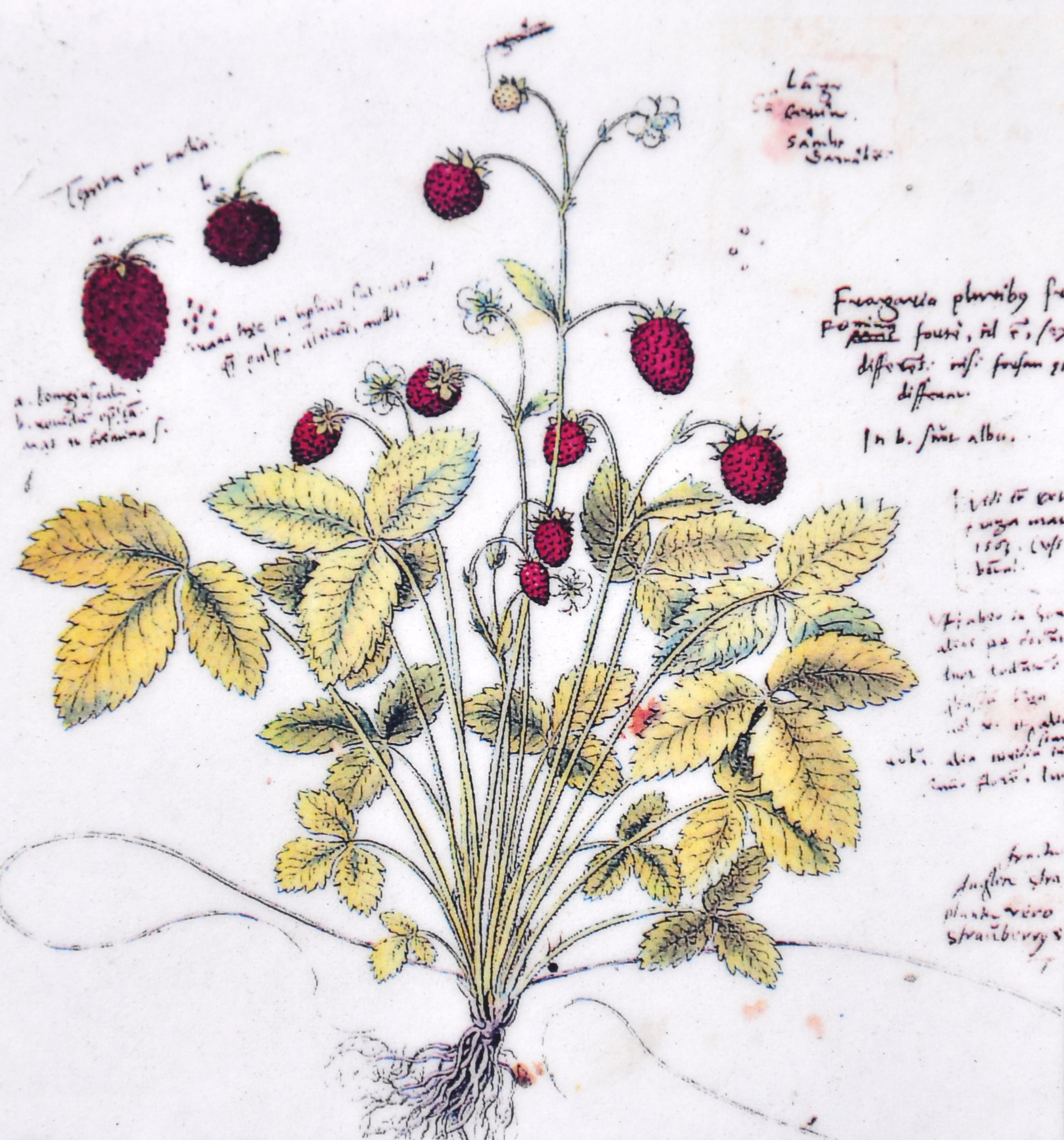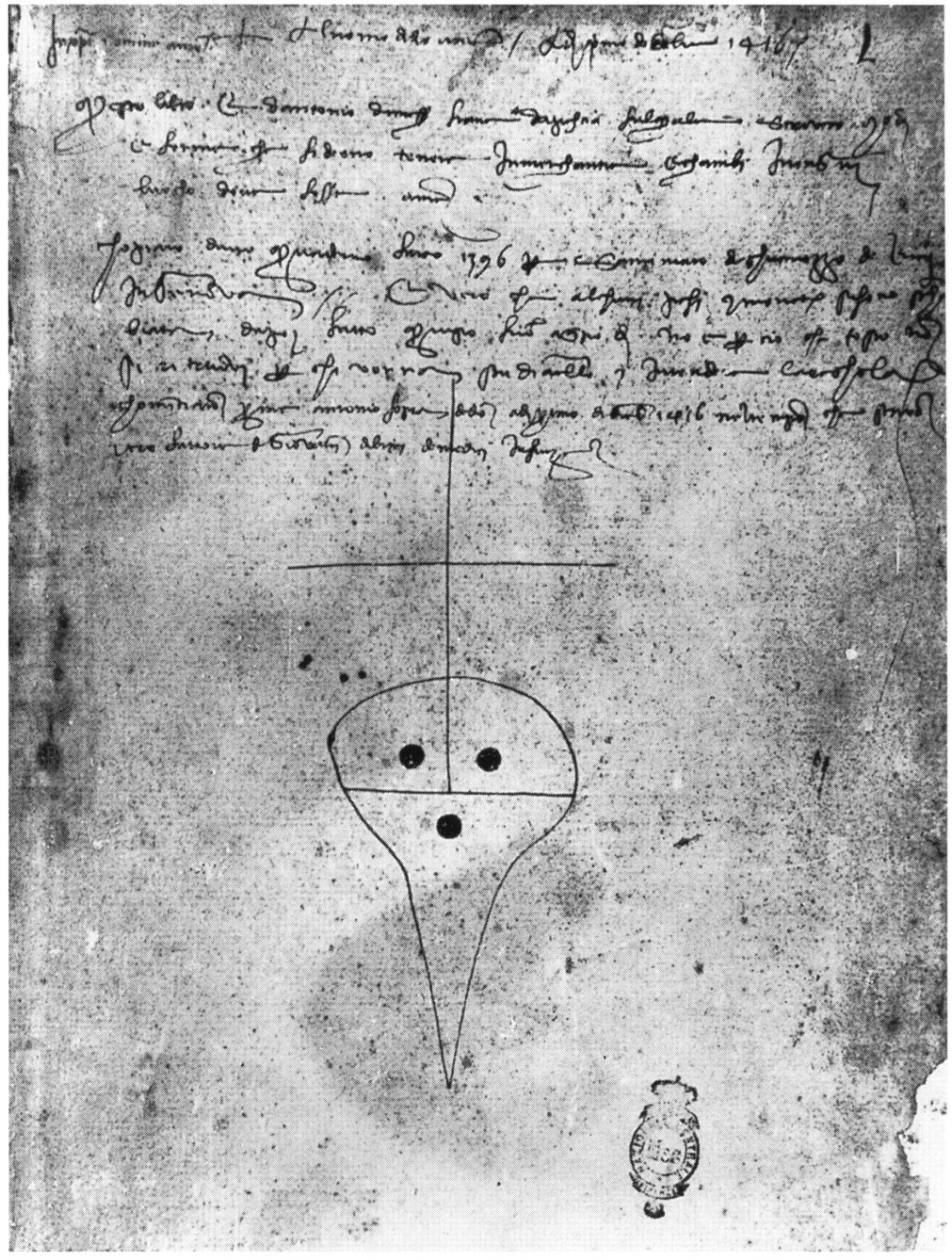|
Physic Garden
A physic garden is a type of herb garden with medicinal plants. Botanical gardens developed from them. History Modern botanical gardens were preceded by medieval physic gardens, often monastic gardens, that existed by 800 at least. Gardens of this time included various sections including one for medicinal plants called the or . Pope Nicholas V set aside part of the Vatican grounds in 1447 for a garden of medicinal plants that were used to promote the teaching of botany, and this was a forerunner to the academic botanical gardens at Padua and Pisa established in the 1540s. Certainly the founding of many early botanic gardens was instigated by members of the medical profession. The naturalist William Turner established physic gardens at Cologne, Wells, and Kew; he also wrote to Lord Burleigh recommending that a physic garden be established at Cambridge University with himself at its head. The 1597 ''Herball, or Generall Historie of Plantes'' by herbalist John Gerar ... [...More Info...] [...Related Items...] OR: [Wikipedia] [Google] [Baidu] |
Chelsea Physic Garden
The Chelsea Physic Garden was established as the Apothecaries' Garden in London, England, in 1673 by the Worshipful Society of Apothecaries to grow plants to be used as medicines. This four acre physic garden, the term here referring to the science of healing, is among the oldest botanical gardens in Britain, after the University of Oxford Botanic Garden. Its rock garden is the oldest in Europe devoted to alpine plants and Mediterranean plants. The largest fruiting olive tree in Britain is there, protected by the garden's heat-trapping high brick walls, along with what is doubtless the world's northernmost grapefruit growing outdoors. Jealously guarded during the tenure of the Worshipful Society of Apothecaries, the garden became a registered charity in 1983 and was opened to the general public for the first time. The garden is a member of the London Museums of Health & Medicine. It is also Grade I listed in the Register of Historic Parks and Gardens of Special Historic Inte ... [...More Info...] [...Related Items...] OR: [Wikipedia] [Google] [Baidu] |
Holborn
Holborn ( or ) is a district in central London, which covers the south-eastern part of the London Borough of Camden and a part ( St Andrew Holborn Below the Bars) of the Ward of Farringdon Without in the City of London. The area has its roots in the ancient parish of Holborn, which lay on the west bank of the now buried River Fleet, taking its name from an alternative name for the river. The area is sometimes described as part of the West End of London or of the wider West London area. The River Fleet also gave its name to the streets ''Holborn'' and ''High Holborn'' which extend west from the site of the former Newgate in the London Wall, over the Fleet, through Holborn and towards Westminster. The district benefits from a central location which helps provide a strong mixed economy. The area is particularly noted for its links to the legal profession, the diamond centre at Hatton Garden and Great Ormond Street Hospital. Origins and administration Holborn emerged ... [...More Info...] [...Related Items...] OR: [Wikipedia] [Google] [Baidu] |
Carolus Clusius
Charles de l'Écluse, L'Escluse, or Carolus Clusius (19 February 1526 – 4 April 1609), seigneur de Watènes, was an Artois doctor and pioneering botanist, perhaps the most influential of all 16th-century scientific horticulturists. Life Clusius was born Charles de l' Écluse in 1526, in Arras (Dutch ''Atrecht''), then in the County of Artois, Spanish Netherlands, now northern France (Hauts-de-France). At the urging of his father, who wanted him to enter the law, he commenced his studies in Latin and Greek at Louvain, followed by civil law. His father then gave him some money to move to Marburg to further his legal studies, but after eight months when his mentor moved away from Marburg he switched to theology, initially at Marburg and then on the suggestion of one of his professors at Wittenberg, where he also began a study of philosophy. Even at Marburg he had also developed an interest in plants that he continued in Wittenberg. Aware of the emerging study of botany, he dec ... [...More Info...] [...Related Items...] OR: [Wikipedia] [Google] [Baidu] |
Conrad Gessner
Conrad Gessner (; la, Conradus Gesnerus 26 March 1516 – 13 December 1565) was a Swiss physician, naturalist, bibliographer, and philologist. Born into a poor family in Zürich, Switzerland, his father and teachers quickly realised his talents and supported him through university, where he studied classical languages, theology and medicine. He became Zürich's city physician, but was able to spend much of his time on collecting, research and writing. Gessner compiled monumental works on bibliography ('' Bibliotheca universalis'' 1545–1549) and zoology ('' Historia animalium'' 1551–1558) and was working on a major botanical text at the time of his death from plague at the age of 49. He is regarded as the father of modern scientific bibliography, zoology and botany. He was frequently the first to describe species of plants or animals in Europe, such as the tulip in 1559. A number of plants and animals have been named after him. Life Conrad Gessner was born on 26 March 15 ... [...More Info...] [...Related Items...] OR: [Wikipedia] [Google] [Baidu] |
Andrea Cesalpino
Andrea Cesalpino ( Latinized as Andreas Cæsalpinus) (6 June 1524 – 23 February 1603) was a Florentine physician, philosopher and botanist. In his works he classified plants according to their fruits and seeds, rather than alphabetically or by medicinal properties. In 1555, he succeeded Luca Ghini as director of the botanical garden in Pisa. The botanist Pietro Castelli was one of his students. Cesalpino also did limited work in the field of physiology. He theorized a circulation of the blood. However, he envisioned a "chemical circulation" consisting of repeated evaporation and condensation of blood, rather than the concept of "physical circulation" popularized by the writings of William Harvey (1578–1657). Biography Cesalpino was born in Arezzo, Tuscany. For his studies at the University of Pisa his instructor in medicine was R. Colombo (d. 1559), and in botany the celebrated Luca Ghini. After completing his course he taught philosophy, medicine, and botany for ... [...More Info...] [...Related Items...] OR: [Wikipedia] [Google] [Baidu] |
Luca Ghini
Luca Ghini (Casalfiumanese, 1490 – Bologna, 4 May 1556) was an Italian physician and botanist, notable as the creator of the first recorded herbarium, as well as the first botanical garden in Europe. Biography Ghini was born in Casalfiumanese, son of a notary, and studied medicine at the University of Bologna. By 1527 he was lecturing there on medicinal plants, and eventually became a professor. He moved to Pisa in 1544, while maintaining his home in Bologna. He created the first herbarium (''hortus siccus'') in that year, drying plants while pressing them between pieces of paper, then gluing them to cardboard. None of his herbaria survive although the one by his student Gherardo Cibo made around 1532 survives. 1544 also saw the establishment of a garden for live plants, which became known as the Orto botanico di Pisa. Ghini published no significant botanical work of his own, but was noted as a teacher many of whose students went on to significant careers, including Cesalpino ... [...More Info...] [...Related Items...] OR: [Wikipedia] [Google] [Baidu] |
Cosimo De' Medici
Cosimo di Giovanni de' Medici (27 September 1389 – 1 August 1464) was an Italian banker and politician who established the Medici family as effective rulers of Florence during much of the Italian Renaissance. His power derived from his wealth as a banker, and inter-marriage with other powerful and rich families. He was a patron of arts, learning and architecture. He spent over 600,000 gold florins (approx. $500 million inflation adjusted) on art and culture, including Donatello's David, the first freestanding nude male sculpture since antiquity. Despite his influence, his power was not absolute; Florence's legislative councils at times resisted his proposals throughout his life, and he was viewed as first among equals, rather than an autocrat.Martines, Lauro (2011). ''The Social World of the Florentine Humanists, 1390–1460''. University of Toronto Press. p. 8. Biography Early life and family business Cosimo de' Medici was born in Florence to Giovanni di Bicci de' Medi ... [...More Info...] [...Related Items...] OR: [Wikipedia] [Google] [Baidu] |
Matthaeus Silvaticus
Matthaeus Silvaticus or Mattheus Sylvaticus (c. 1280 – c. 1342) was a medieval Latin medical writer and botanist. His Life and Encyclopedia Matthaeus Silvaticus was born in northern Italy, probably Mantua. He was a student and teacher in botany and medicine at the School of Salerno in southern Italy. His only notability is for writing a 650-page encyclopedia about medicating agents (a pharmacopoeia) which he completed about year 1317 under the Latin title ''Pandectarum Medicinae'' or ''Pandectae Medicinae'' (English: ''Encyclopedia of Medicines''). Most of the medicating agents were botanicals ("herbal medicines"). The presentation is in alphabetical order. The bulk of his encyclopedia is compiled from earlier medicine books, including books by Dioscorides, Avicenna, Serapion the Younger Serapion the Younger was the author of a medicinal-botany book entitled ''The Book of Simple Medicaments''. The book is dated to the 12th or 13th century. He is called "the Younger" to disti ... [...More Info...] [...Related Items...] OR: [Wikipedia] [Google] [Baidu] |
The University Of Edinburgh
The University of Edinburgh ( sco, University o Edinburgh, gd, Oilthigh Dhùn Èideann; abbreviated as ''Edin.'' in post-nominals) is a public research university based in Edinburgh, Scotland. Granted a royal charter by King James VI in 1582 and officially opened in 1583, it is one of Scotland's four ancient universities and the sixth-oldest university in continuous operation in the English-speaking world. The university played an important role in Edinburgh becoming a chief intellectual centre during the Scottish Enlightenment and contributed to the city being nicknamed the " Athens of the North." Edinburgh is ranked among the top universities in the United Kingdom and the world. Edinburgh is a member of several associations of research-intensive universities, including the Coimbra Group, League of European Research Universities, Russell Group, Una Europa, and Universitas 21. In the fiscal year ending 31 July 2021, it had a total income of £1.176 billion, ... [...More Info...] [...Related Items...] OR: [Wikipedia] [Google] [Baidu] |
The Gardeners Dictionary
''The Gardeners Dictionary'' was a widely cited reference series, written by Philip Miller (1691–1771), which tended to focus on plants cultivated in England. Eight editions of the series were published in his lifetime. After his death, it was further developed by George Don as ''A general system of gardening and botany. Founded upon Miller's Gardener's dictionary, and arranged according to the natural system'' (1831–1838). Editions References External links Various scansat The Internet Archive The Internet Archive is an American digital library with the stated mission of "universal access to all knowledge". It provides free public access to collections of digitized materials, including websites, software applications/games, music, ... Gardening books Dictionaries by subject {{garden-book-stub ... [...More Info...] [...Related Items...] OR: [Wikipedia] [Google] [Baidu] |
Philip Miller
Philip Miller FRS (1691 – 18 December 1771) was an English botanist and gardener of Scottish descent. Miller was chief gardener at the Chelsea Physic Garden for nearly 50 years from 1722, and wrote the highly popular ''The Gardeners Dictionary''. Life Born in Deptford or Greenwich, Miller was chief gardener at the Chelsea Physic Garden from 1722 until he was pressured to retire shortly before his death. According to the botanist Peter Collinson, who visited the physic garden in July 1764 and recorded his observation in his commonplace books, Miller "has raised the reputation of the Chelsea Garden so much that it excels all the gardens of Europe for its amazing variety of plants of all orders and classes and from all climates..." He wrote ''The Gardener's and Florists Dictionary or a Complete System of Horticulture'' (1724) and ''The Gardener's Dictionary containing the Methods of Cultivating and Improving the Kitchen Fruit and Flower Garden'', which first appeared in 1 ... [...More Info...] [...Related Items...] OR: [Wikipedia] [Google] [Baidu] |
Chelsea Physic Garden
The Chelsea Physic Garden was established as the Apothecaries' Garden in London, England, in 1673 by the Worshipful Society of Apothecaries to grow plants to be used as medicines. This four acre physic garden, the term here referring to the science of healing, is among the oldest botanical gardens in Britain, after the University of Oxford Botanic Garden. Its rock garden is the oldest in Europe devoted to alpine plants and Mediterranean plants. The largest fruiting olive tree in Britain is there, protected by the garden's heat-trapping high brick walls, along with what is doubtless the world's northernmost grapefruit growing outdoors. Jealously guarded during the tenure of the Worshipful Society of Apothecaries, the garden became a registered charity in 1983 and was opened to the general public for the first time. The garden is a member of the London Museums of Health & Medicine. It is also Grade I listed in the Register of Historic Parks and Gardens of Special Historic Inte ... [...More Info...] [...Related Items...] OR: [Wikipedia] [Google] [Baidu] |









